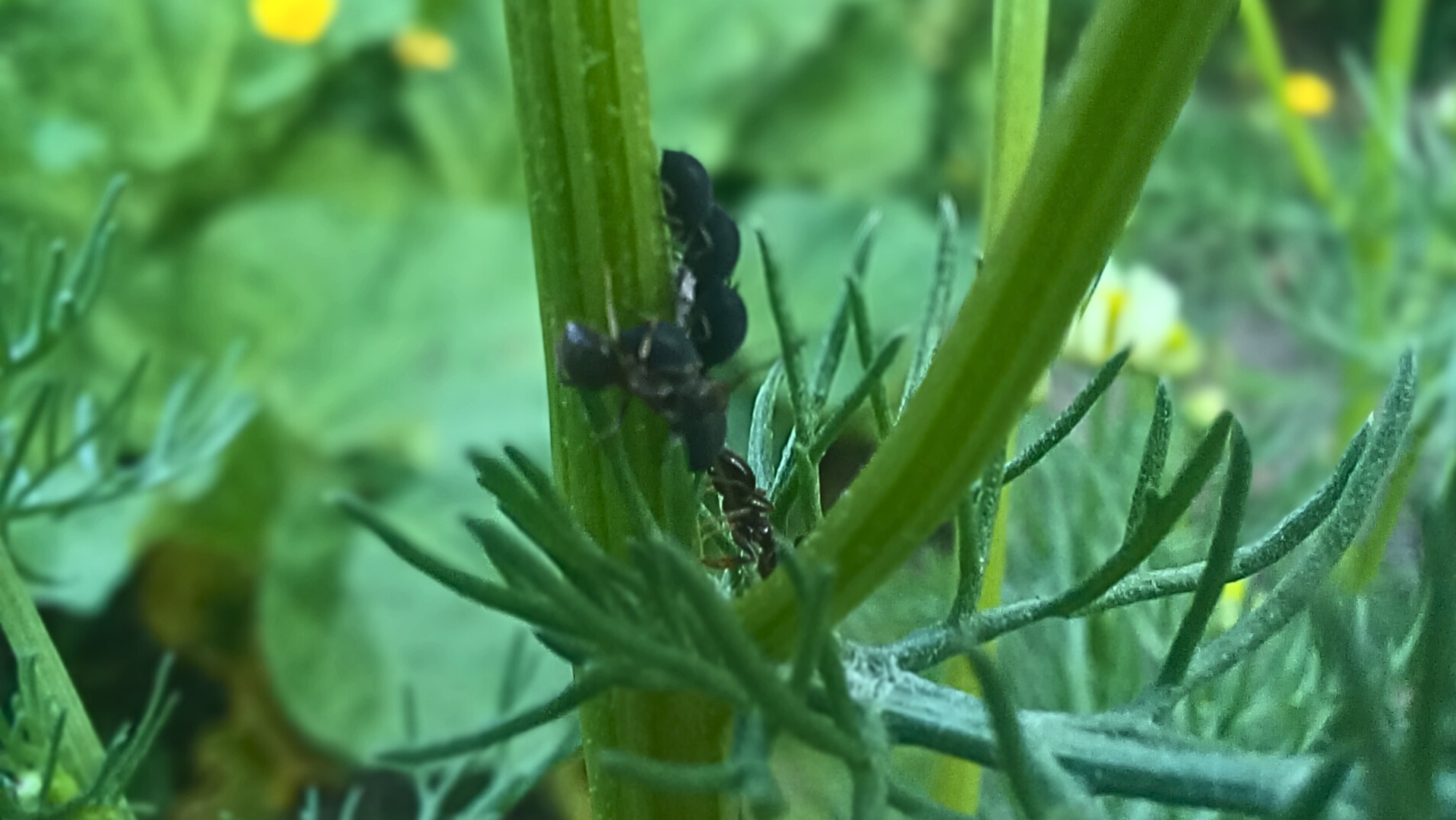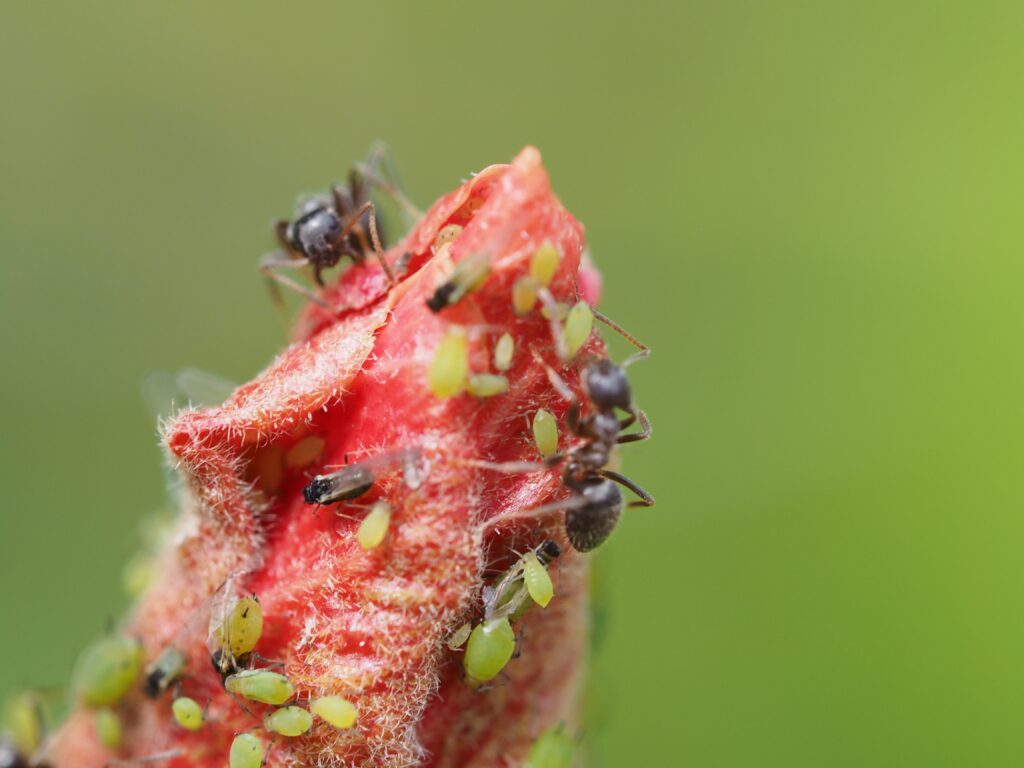
Source: Alberto Olaya via Unsplash
31/May/2023 by Sophie
Yesterday, while enjoying an evening walk together, Alex and I were watching the sights and smelling the flowers (I love smelling the lilacs this time of year) when we came across our first encounter this season of a common tiny garden pest – aphids!
These tiny creatures had taken up residence right below a beautiful flower bud of a plant, which is pictured below (if anyone recognizes the species from the leaves, please let me know!). We decided to take a closer look, and when we got down low to the ground, we were delighted to find that we has just stumbled upon a whole party happening right under our very noses!
Aphids and Ants: BFFs for life
What we saw was a classic example of a mutualistic relationship that can be found in the garden. Aphids and ants are like the plant dynamic duo. Aphids feed themselves by sucking up plant sap, and in return, they produce a sweet substance called honeydew, which is essentially aphid err…pee and poop, but hey – ants absolutely adore eating it! In exchange for the aphid’s sweet sweet honeydew, the ants act as the ever-so vigilant bodyguards of the aphids, tending to them and protecting them from other potential predators, like ladybugs.
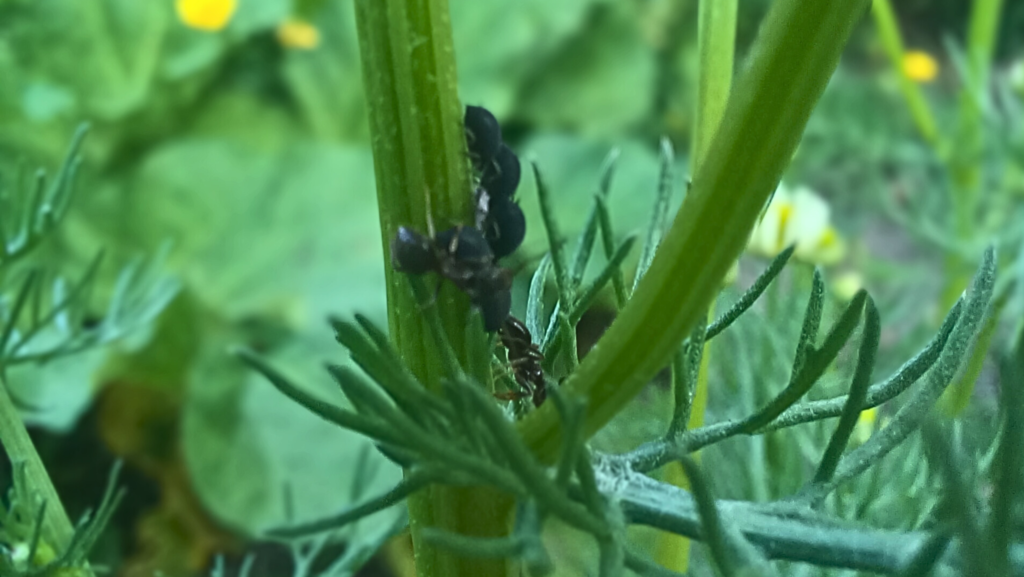
Source: Author
Ladybugs to the Rescue: Natural Aphid Predators
While ants may love aphids, gardeners might not be so keen to have them around the garden they’re looking to harvest from. Low to moderate amounts of aphids won’t really do much to your plants in terms of damage, but large infestations can stunt shoots, yellow leaves, and encourage mold fungus growth which, like the ants, absolutely loves the honeydew…stuff.
So how can you help stop aphid growth in your garden? Say hello to one of our favourite garden saviors – ladybugs! These delightful, polka-dotted beetles are not just pretty faces; they are natural predators of aphids. To attract these beneficial insects to our gardens, we can plant their favorite hangouts, such as marigolds, yarrow, and dill. At this time of year, when ladybugs are just beginning to hatch, I try to move any leaves with ladybug eggs on them close to a plant I’ve noticed having a hard time with aphids. In a way, I guess this is also a mutually beneficial relationship, but this time between the ladybug and I 🙂 .
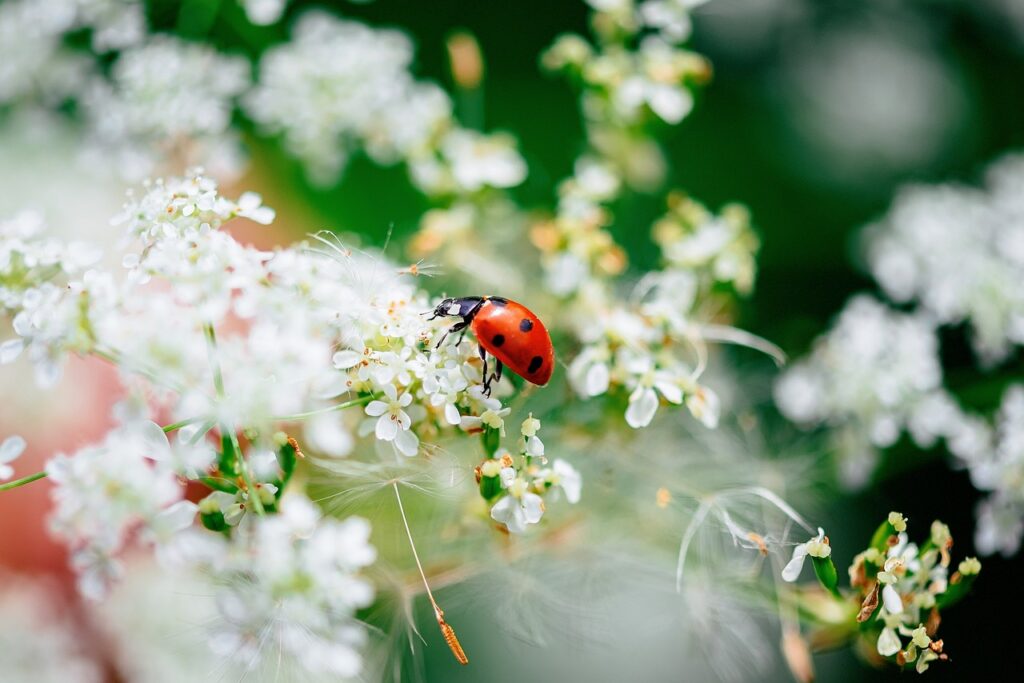
Source Jeremy Kyejo via Pixabay
Ecologically-based Pest Management
By fostering a healthy ecosystem and inviting beneficial insects like ladybugs into our garden, we can establish a balance that keeps aphid populations in check, without resorting to adding synthetic chemicals. In the organic pest control world, this technique is called “biological control”, also know as “biocontrol”.
This approach works alongside the power of the aptly called “beneficial insects”, as they are a gardener’s true allies. By identifying the beneficial insects in our garden, understanding their unique life cycles and supply needs, and adjusting our management practices accordingly, we can support the creations of a favorable environment for them. For example, allowing ladybugs to thrive would help to restrict the aphid population size. It’s a delicate dance where we aim to maintain a balance, keeping the pests at bay without completely eliminating them. This way, we ensure a sustainable food web where natural enemies have a steady supply of prey, which contributes to the long-term success of our pest control efforts.
Aphid Mummies
In addition to moving ladybug eggs closer to aphid-infested ants, I make sure not to remove any leaves containing eh…mummified aphids. You heard that right – the certain species of tiny parasitoid wasps have developed the remarkable strategy of mummifying their victims. These wasps lay their eggs inside aphids, the larvae hatch, and then they eat the aphid’s insides. While they do this, the baby wasps are able to manipulate and transform the aphid’s body into a protective, shell-like structure, effectively mummifying it. Insane, right? I think parasitoid wasps are a really cool example of nature’s intricate web of interactions and the unsung members of this dance of life we don’t always prioritize in the craziness of our daily lives.
Crafty Diversions: Using Trap Crops
When outsmarting aphids in our gardens requires a bit of cleverness, trap crops are our go-to secret weapon. By planting a few sacrificial plants, called “trap crops” along the edges of our garden, we can divert aphids’ attention away from our prized veggies, and towards a yummier treat . These decoy crops act as bug magnets, luring aphids and other common pests away while our main plants thrive undisturbed. Our favourite is Nasturtium. From seed to flower, these 100% edible plants not only fool aphids but the occasional handful also add a delightful, peppery kick to our dishes.
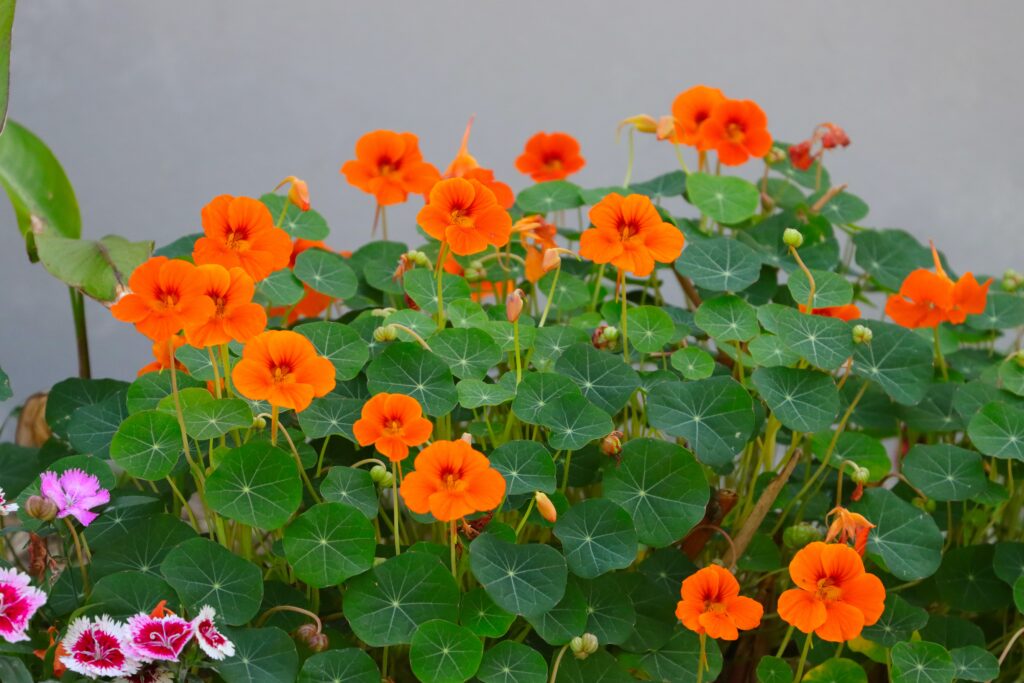
Source Anthony Rae via Unsplash
As we immerse ourselves in the captivating world of aphids and their surprising relationships, we realize that even the tiniest creatures have a role to play in our gardens. What are your tried-and-tested aphid-fighting hacks? We want to hear your methods for keeping these garden intruders at bay. Let us know in the comments below!
